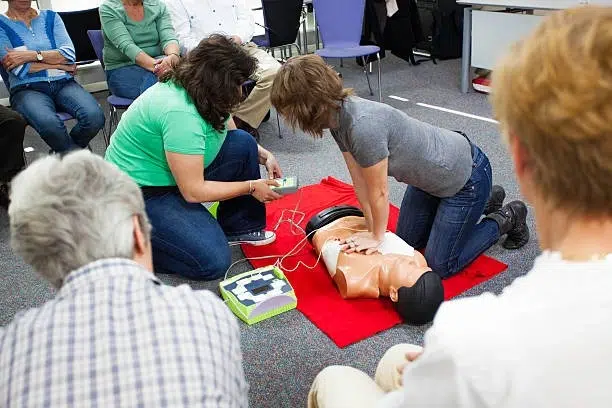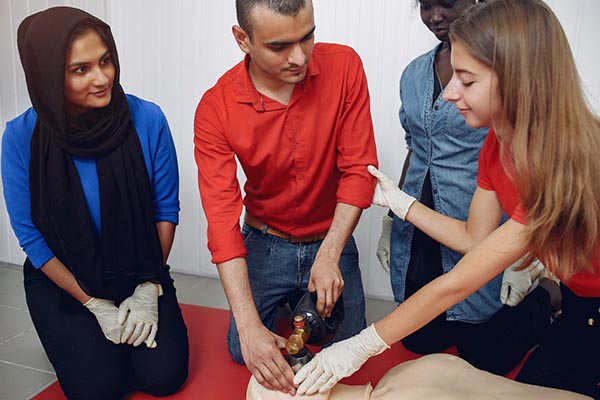
In the fast-paced environment of a school, emergencies can occur at any moment. Teachers, who are often the first responders in these situations, play a crucial role in ensuring the safety and well-being of students. One of the most effective ways to empower teachers in handling emergencies is through CPR training. This article explores how CPR training transforms teacher responses in emergencies, highlighting its importance, benefits, and implementation strategies.

Cardiopulmonary resuscitation, or CPR, is a lifesaving technique used in emergencies when someone’s heartbeat or breathing has stopped. For teachers, knowing CPR can make the difference between life and death during critical moments. In schools, where children are prone to accidents and health issues, having staff trained in CPR ensures that immediate assistance is available when needed.
Teachers have a responsibility to ensure the safety of their students. While not all schools require CPR certification for teachers, it is becoming increasingly common as part of emergency preparedness plans. Being trained in CPR not only equips teachers with the skills to act in emergencies but also aligns with their ethical duty to protect and care for their students.
CPR training instills confidence in teachers by providing them with the knowledge and skills needed to respond effectively in emergencies. This preparedness reduces anxiety and hesitation, enabling teachers to act quickly and efficiently.
With CPR-trained teachers, schools become safer environments for students. In the event of cardiac arrest or other emergencies, immediate CPR can double or even triple a victim’s chance of survival. Teachers trained in CPR are more likely to recognize signs of distress and administer timely assistance.
When teachers undergo CPR training, it fosters a culture of safety within the school. This culture encourages staff and students to prioritize health and safety, creating an environment where everyone is more aware and prepared for potential emergencies.
Schools looking to implement CPR training should start by developing a comprehensive training program. This program should include basic CPR techniques, the use of automated external defibrillators (AEDs), and first aid skills. Partnering with certified training organizations ensures the program meets national standards and provides high-quality instruction.
Regular training sessions are essential to keep teachers’ skills sharp and up-to-date. Schools should schedule initial training for new staff and regular refresher courses to reinforce skills and update teachers on any changes in CPR guidelines.
Incorporating CPR training into professional development programs makes it easier for teachers to access training and view it as an integral part of their role. This integration emphasizes the importance of CPR skills and encourages more teachers to participate in training sessions.

While the benefits of CPR training are clear, schools may face challenges in implementing training programs. Common barriers include budget constraints, time limitations, and a lack of available training resources. To overcome these challenges, schools can seek funding from local health organizations or government grants, schedule training during staff development days, and explore online training options.
Encouraging teacher participation in CPR training is crucial for its success. Schools can motivate teachers by highlighting the personal and professional benefits of being CPR-certified, offering incentives such as certification credits, and providing flexible training schedules.
CPR training is an invaluable tool that transforms teacher responses in emergencies, enhancing the safety and well-being of students. By equipping teachers with the skills and confidence to act swiftly, schools create a safer environment where everyone is prepared for unexpected situations. As more schools recognize the importance of CPR training, the positive impact on students, teachers, and communities will continue to grow.
To ensure the safety and well-being of students, it’s critical for teachers to be equipped with life-saving skills. We urge you to take the next step in emergency preparedness by getting your CPR certification. Connect with CPR Classes Near Me to find a training program that fits your schedule and educational needs. Whether you’re a school administrator seeking to implement a comprehensive training program or an individual teacher committed to enhancing your skills, CPR Classes Near Me offers certified training that aligns with national standards. Don’t wait—become a certified responder today and contribute to a safer school environment.
Our primary goal is to ensure that you receive a top-quality CPR/First Aid certification. With our in-person training in Austin, you can learn CPR and BLS in just one class. Your presence is all that’s needed to continue with your lesson! During your session, you will complete all the live-training components necessary to ensure you receive your AHA Healthcare Provider certification card.
Our CPR Classes in Austin are discounted to $59.95 (saving you $20), and our CPR + First Aid Class is offered at $79.95 (also saving you $20). When looking for CPR Classes, ensure to check for the American Heart Association seal. Other sites might seem cheaper but frequently lack the official training credentials demanded by employers.
Upon successful completion of the course, you will obtain a CPR certification that is valid for two years. The AHA CPR certification is recognized with the highest acceptance rate among employers nationwide.
Indeed! Enroll in any CPR Certification Austin BLS course to extend your certification for an additional two years. The in-person BLS course and the Renewal Class are identical.
Anyone capable of completing the course independently should consider pursuing CPR training and CPR Certification. There is no minimum age restriction for obtaining a CPR certification in Austin through the American Heart Association (AHA)..
CPR training needs to be carried out in person to guarantee its effectiveness. Our experienced instructors offer an engaging and dynamic learning experience. Typically, employers do not recognize CPR certifications that are obtained solely through online courses.
All authorized American Heart Association training centers are obligated to display the entire video. After a three-hour session with CPR Classes Near Me Austin, your BLS CPR eCard will be promptly issued by the instructor on the same day!